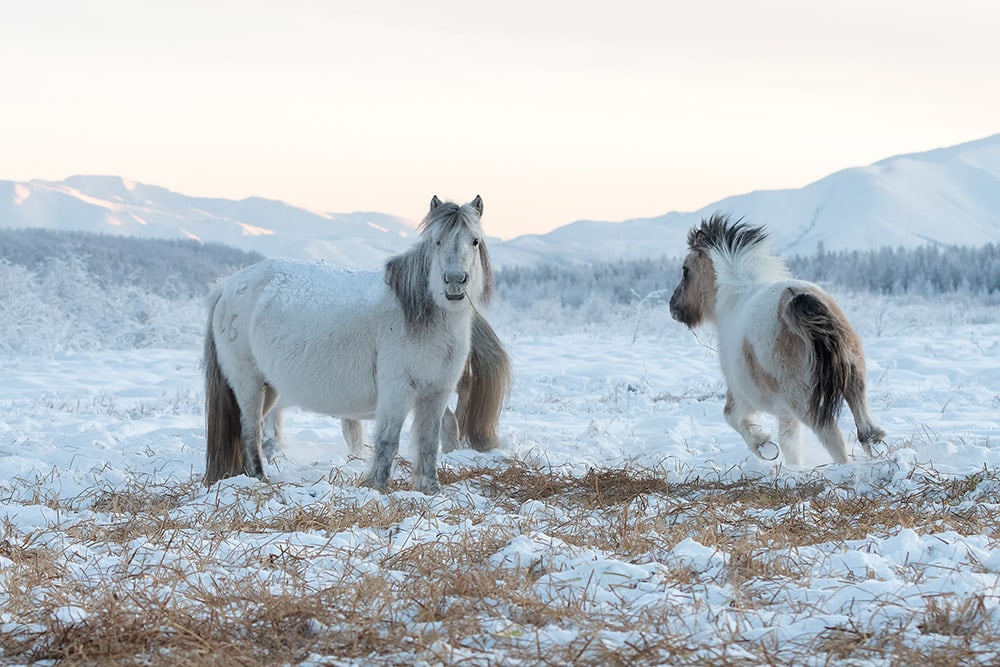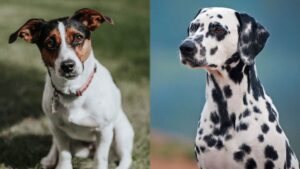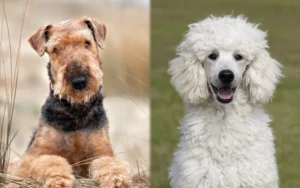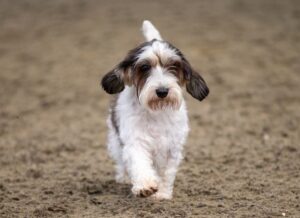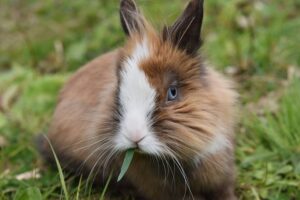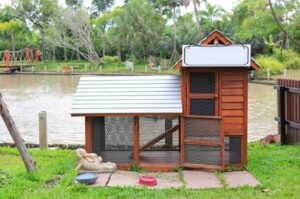During the winter, most barn horses are covered in hoods and waterproof blankets. Although these horses are pampered to say the least, their additional human-made insulation is much needed during cold winter days.
Still, some horse breeds were developed in winter climates, allowing them to not just survive cold weather, but thrive in it. To find out about the top five horse breeds that thrive in cold weather, read on.

The 5 Horse Breeds That Thrive in Cold Weather
1. Yakut (Yakutian) Horse
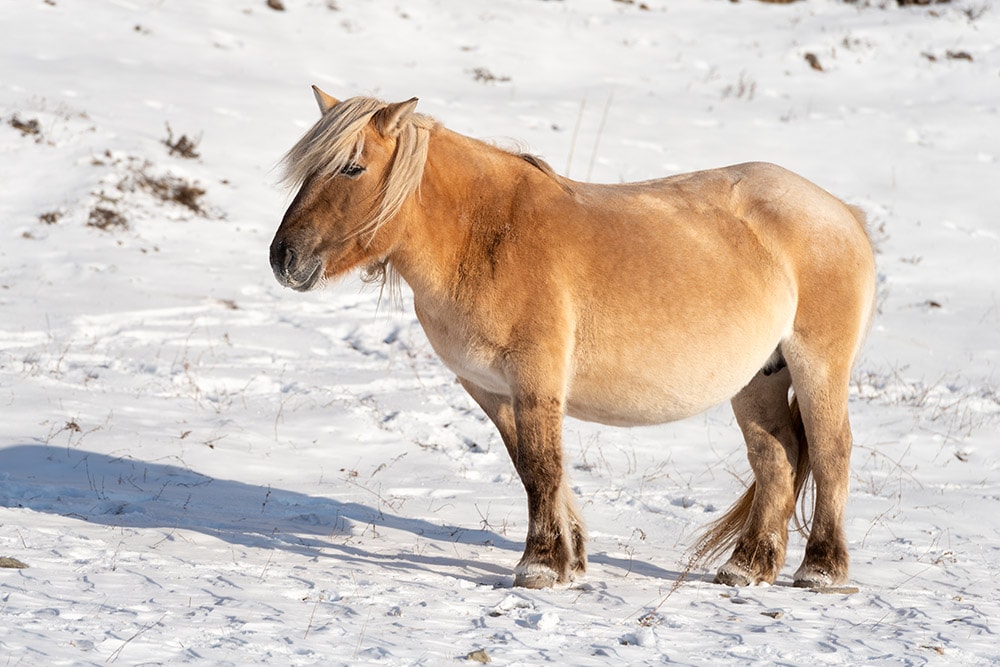
The Yakut Horse was bred in the Yakutian region. It is a relatively small breed, but it thrives in cold environments. It even has the ability to locate forage underneath frozen snow covers. Of the horse breeds that can thrive in the winter, this is probably the most impressive.
History
Very little is known about the history of the Yakut Horse. Experts estimate that the horse breed evolved from other domesticated breeds that were brought with the Yakuts during the migration in the 13th century. This would mean that they did not descend from wild horses from the Neolithic era.
Characteristics
The Yakut Horses are easily the most equipped breed to withstand harsh winter environments. They are typically only about 13.2 hands high, and they have a very sturdy stature with a heavy and thick mane and coat.
These horses are able to survive without shelter in outside temperatures as low as -94 degrees Fahrenheit. To help stay warm in the winter, they have an incredibly dense winter coat that can reach as long as 8 centimeters. They can also locate vegetation underneath the Siberian snow.
On top of their incredibly impressive ability to withstand the Siberian winter, Yakut Horses are incredibly docile and willing, matching their cute stature.
Uses
Today, the Yakut Horses are typically only used for meat and milk. They can also be used for general riding and general work purposes. You will be hard pressed to find this breed outside of the native region.
2. Icelandic Horse
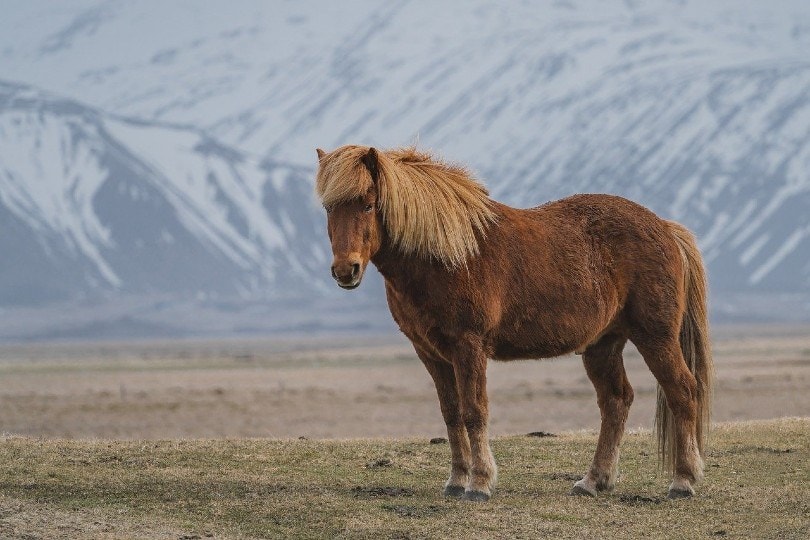
After being bred by Norse settlers, the Icelandic horse grew to be one of the hardiest horse breeds. These horses can handle the harsh conditions of Iceland, including intense snow storms and high winds. As a result, they more than survive in cold weather – they thrive in it.
History
It’s believed that Icelandic Horses arrived around 860 and 935 AD when brought over by Norse settlers’ ships. It’s believed that this horse was selected because they are short and sturdy, making them easier to transport via ship. Since arriving in Iceland, these horses have further been selectively bred for the conditions.
Interestingly, the Icelandic parliament prohibited bringing any other horse breeds into the country in 980 AD. To this day, Icelandic Horses are considered one of the purest breeds in the world. They still thrive in Iceland, but they aren’t commonly found elsewhere.
Characteristics
Icelandic Horses are very short and stout. In fact, they have a stature more similar to that of a pony, but they are still able to carry full grown riders. More than that, these horses live much longer than other breeds, with some living as long as 50 years.
Most often, Icelandic Horses can be found with chestnut, bay, gray, pinto, black, and palomino coats. They also have very wide foreheads and short necks. To help keep them warm, their manes and tails are very full of coarse hair. They even have a double coat for further insulation.
Icelandic Horses are typically really spirited and friendly. Despite their small size, they are known as having really big personalities, making them a favorite in Iceland’s tourism business.
Uses
Even though Icelandic Horses were used for hard work years ago, most are used for leisure riding or competition today. Additionally, the tourism industry in Iceland has allowed for horseback tours. Some people still use the breed to round sheep up on a farm, though.
3. Bashkir Horse
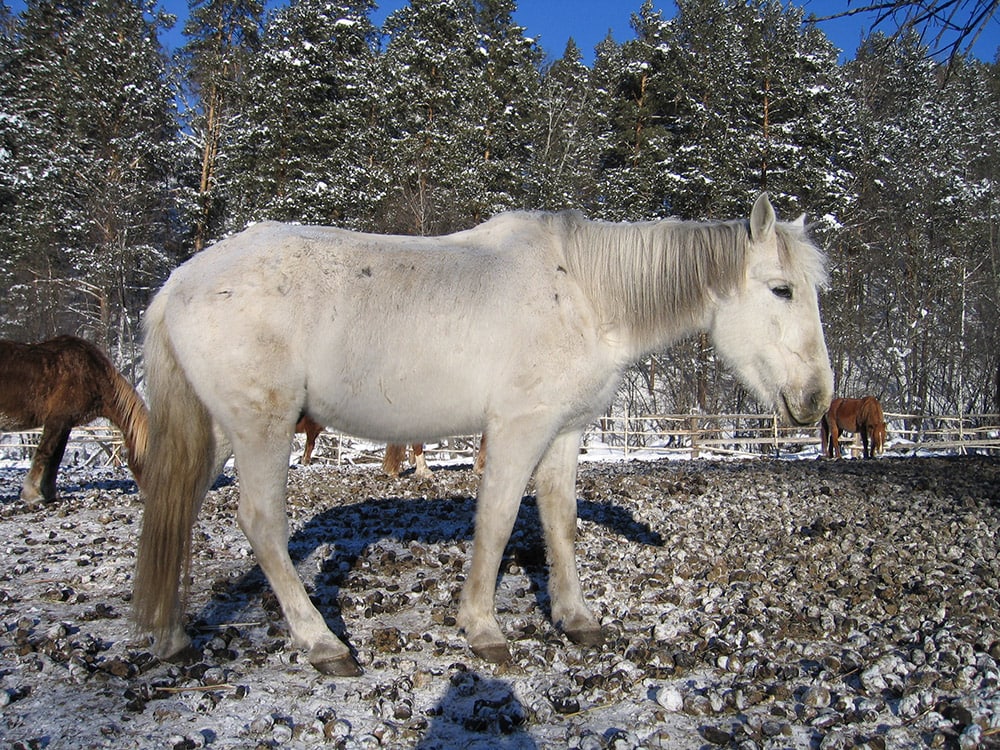
The Bashkir Horse is a unique horse breed that can handle both extreme cold and extreme heat. As a result, these horses can survive just about anywhere. Not to mention, they can be found with a uniquely curly coat, making them a favorite among horse enthusiasts everywhere.
History
The Bashkir Horse is a unique horse breed that was developed in Russia’s Ural Mountains. These mountains are incredibly extreme in both temperature and weather. During the winter, the temperatures can drop down to Arctic levels. At the same time, the short summers in this mountain range can be very hot.
Other than this horse’s geographic background, very little is known about its breeding. It is assumed that the Bashkir people bred these horses. Today, the breed has been bred with other horses and they are plentiful within Russia and around the world.
Characteristics
Bashkir Horses are a small breed. They typically stand about 14 hands. Their coats are most often colored bay, chestnut, mouse gray, or roan. Additionally, their manes and tails are usually very thick and long.
In addition to the hardiness of this breed, Bashkirs often have hair that can become thick and curly. One of the only other curly breeds is the North American Curly Horse, but most evidence shows that these two breeds are not related, despite their unique curls.
As for their temperaments, Bashkir Horses are known for being strong, gentle, and even tempered. Despite their docile nature, they are incredibly intelligent and show high endurance levels.
Uses
Bashkirs are known for being incredibly hard working. You can use them for riding or farm work because of their impressive endurance. Additionally, mares produce a lot of milk per year. The average yield is about 4,600 pounds per year.
4. Kabarda (Kabardin) Horse
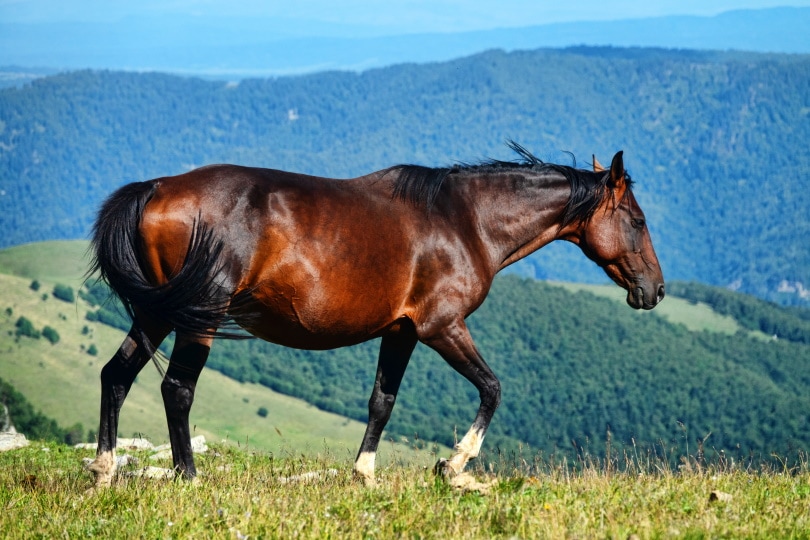
Much like the Bashkir breed, Kabarda Horses were bred in Russia, more specifically in the Balkaria region. These horses are incredibly hardy, with the ability to adapt to just about any environment. Interestingly, their origins may be as old as the Hittite civilization.
History
We know that the Kabardas have been bred by the tribesmen in northern Caucasus since the 16th century. The breed is based on a combination of three other horses so that they could be kept in herds and move along the mountains.
During the 20th century, the breed started to decline with the 1917 Russian Revolution. During the 1920s, however, the government worked to re-establish the breed. Today, Kabardas are not as plentiful as they once were, but they are still bred primarily in Russia.
Characteristics
Kabarda Horses are medium sized, typically being about 15.1 hands. Their coat is normally black, bay, or gray. Meanwhile, their body is very solid and well muscled. Interestingly, Kabarda Horses have a heightened oxidizing capacity, which makes the breed more suitable for working in the mountains.
As for their personality, these horses are considered very energetic and free spirited. At the same time, they are reliable and hardworking, meaning that you can depend on them for work or tough conditions.
Uses
Since the breed was built for mountainous work, they have impressive endurance and can work on difficult terrains. Outside of Russia, they are typically only used as a sport horse. Within Russia, they can still be found for riding and as a packhorse.
5. Finn Horse
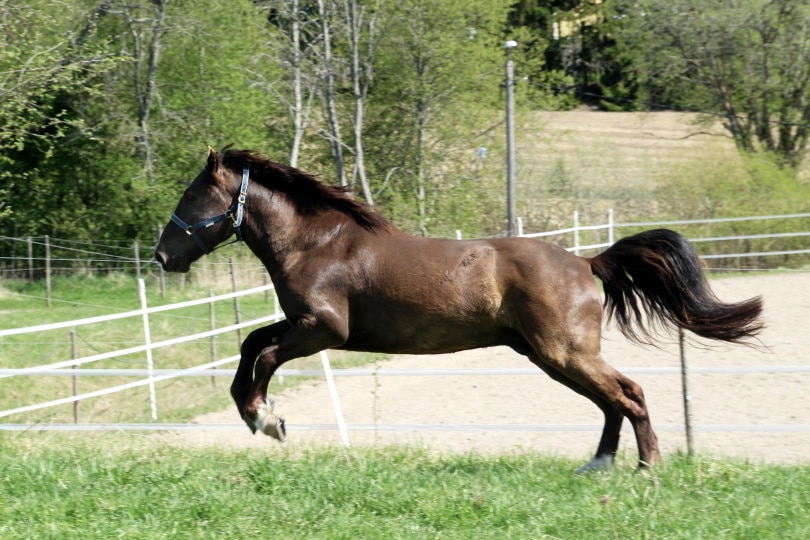
As the only breed that was fully developed in Finland, the Finn Horse is an incredibly versatile cold blood breed. It is sometimes called the “Finnish Universal” because of how versatile the horse can be. Though the exact origins are unknown, this horse is wildly revered as a hardy winter horse.
History
Finn Horses were originally bred for the local people in Finland and descended from domestic breeds. Because they were used by the locals, the breed developed to satisfy a variety of needs, allowing them to be highly versatile today. The breed’s first studbook came out in 1907. Today, there are four different sections, including the Trotter, Draught, Riding, and Pony.
Characteristics
The Finn Horse is most known for its multi-purpose use. The reason why it is so versatile is because it is of average height, but it also is incredibly sturdy. As a result, they can do a lot of hard work while still being easy to handle.
The horses normally have thick tails and manes with light feathering on the legs. Their bodies are typically long while still being rounded and proportional. Around 90% of the existing breed has a chestnut body. The average height is about 15.1 hands, and Finns are typically muscular.
Another notable feature of this breed is that they are easy to train. Many people classify Finns as being “honest and sincere” because they are eager to work and will do their best to cooperate and obey.
Uses
As we’ve mentioned several times, Finn Horses are known for their versatility. For this reason, they can satisfy just about any need or use. They are strong enough so as to ride them, but you can also use them for work activities, mounted athletics, or dressage.

Summary
Even though most barn horses shiver at the thought of anything remotely cold, these five breeds have been bred to withstand some of the harshest winters. From the Icelandic winds to the Siberian snows, these breeds are incredibly hardy and thrive in cold weather.
Looking for breeds with a rich history? Check out:
Featured Image Credit: Tatiana Gasich, Shutterstock

